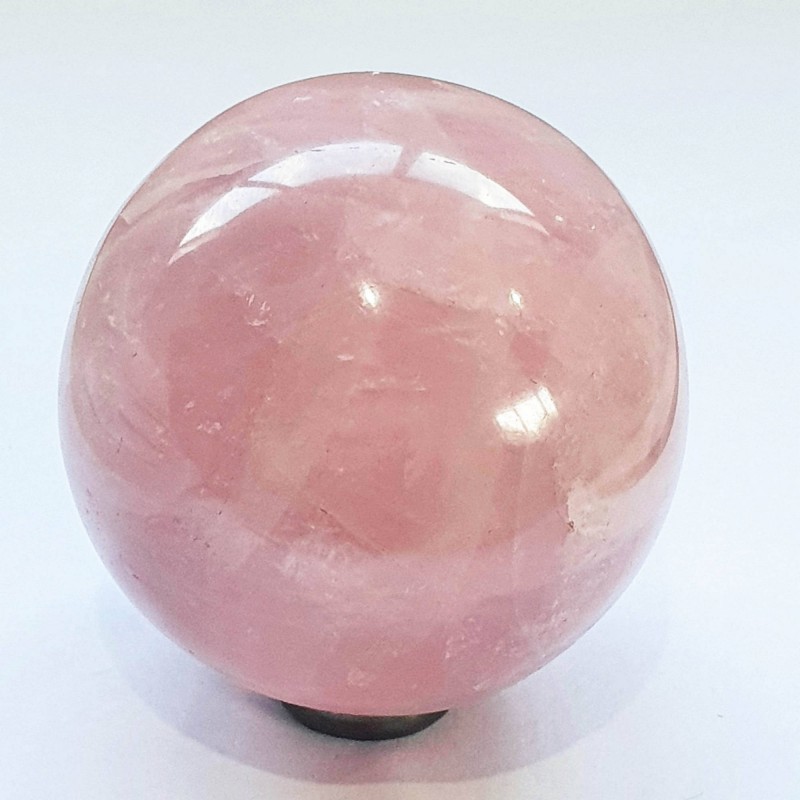

The term "rose quartz" has also occasionally been used for quartz that is colored by other inclusions. This is much faster than the bleaching observed in smoky quartz or amethyst, and specimen should be kept in the dark to preserve their color. An example for its UV-sensitivity is shown on the photo to the left: a natural specimen was completely bleached within 10 hours of UV irradiation. UV-bleaching of euhedral rose quartz / pink quartzThe color in both natural and synthetic specimens is very light- and heat sensitive (Balitsky et al 1998). The crystals are also slightly dichroic the strongest color is observed when the polarization plane is perpendicular to the c-axis. A synthetic counterpart has been synthesized, and irradiation-induced P-bearing color centers have found to be responsible for its color, too, but aluminum was absent (Balitsky et al 1998).

According to Maschmeyer and Lehmann (1983), the color is caused by irradiation-induced color centers based on aluminum, Al, and phosphorous, P, that replace Si in the atom lattice. They are found as a late formation in pegmatite pockets, often overgrowing smoky quartz crystals in groups of parallel-grown crystals. Because of the substantial differences in the physical properties and causes of color it has been suggested to give the variety of pink-colored quartz that forms crystals the name " pink quartz"(Hori, 2001) or " Rosaquarz" (German for pink quartz, Rykart, 1995) but neither of these names have found widespread use. The other variety occurs in well-formed crystals of similar color. The color of the fibrous mineral as well as the color of rose quartz is stable up to temperatures of about 575☌ (Lehmann and Bambauer, 1978 Goreva et al, 2001) and is also generally stable in ultraviolet light (Goreva et al, 2001), although there have been occasional reports of material that pales quickly in daylight.Īlto da Pitorra, Laranjeiras, Galiléia, Minas Gerais, Brazil 2. These inclusions are probably the result of an exsolution from an initially homogeneous material. Rose quartz is always showing a hazy to translucent character due to microscopic fibrous inclusions of a pink borosilicate mineral related to dumortierite (Applin and Hicks, 1987 Goreva et al, 2001 Ma et al, 2002), which group leader Rossman names "dididumortierite" (Nadin, 2007). It occurs in different hues of pink, sometimes bluish, sometimes more reddish irradiation may cause the formation of smoky quartz color centers and add a gray tone. One is found in translucent masses made of intergrown anhedral crystals. Dominion Rose Group Claims, Custer, Custer Mining District, Custer Co., South Dakota, USA 1.


 0 kommentar(er)
0 kommentar(er)
